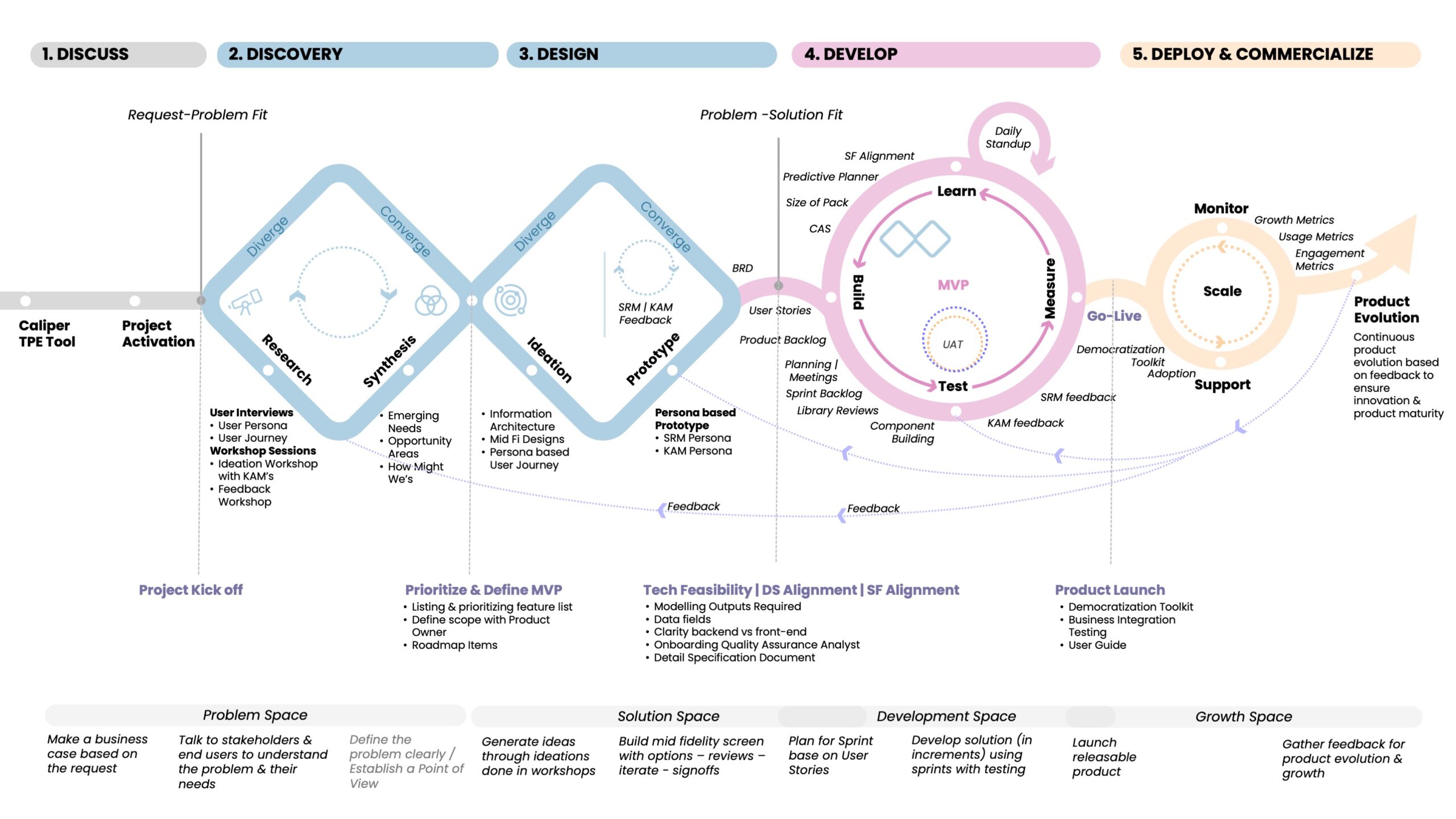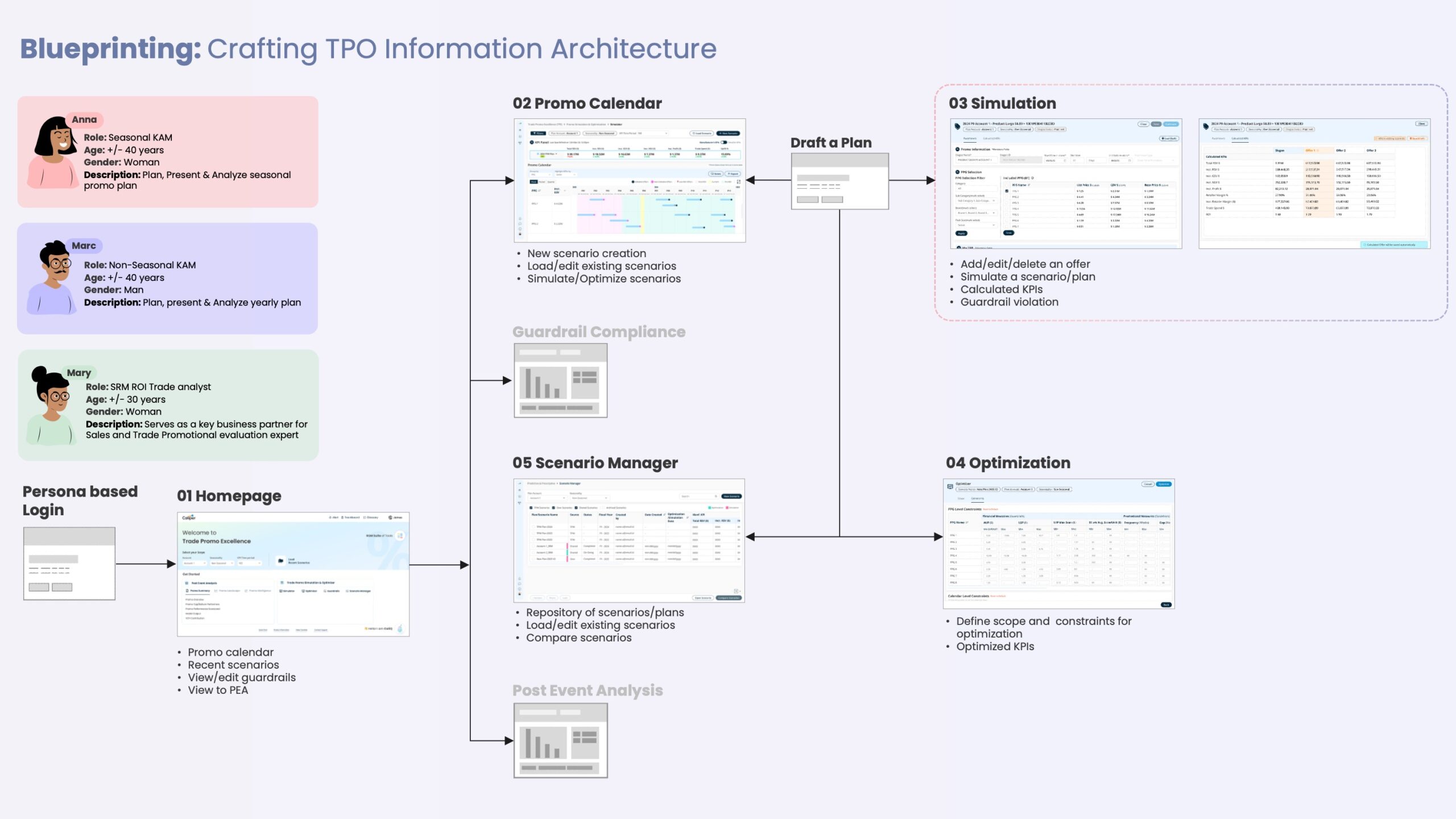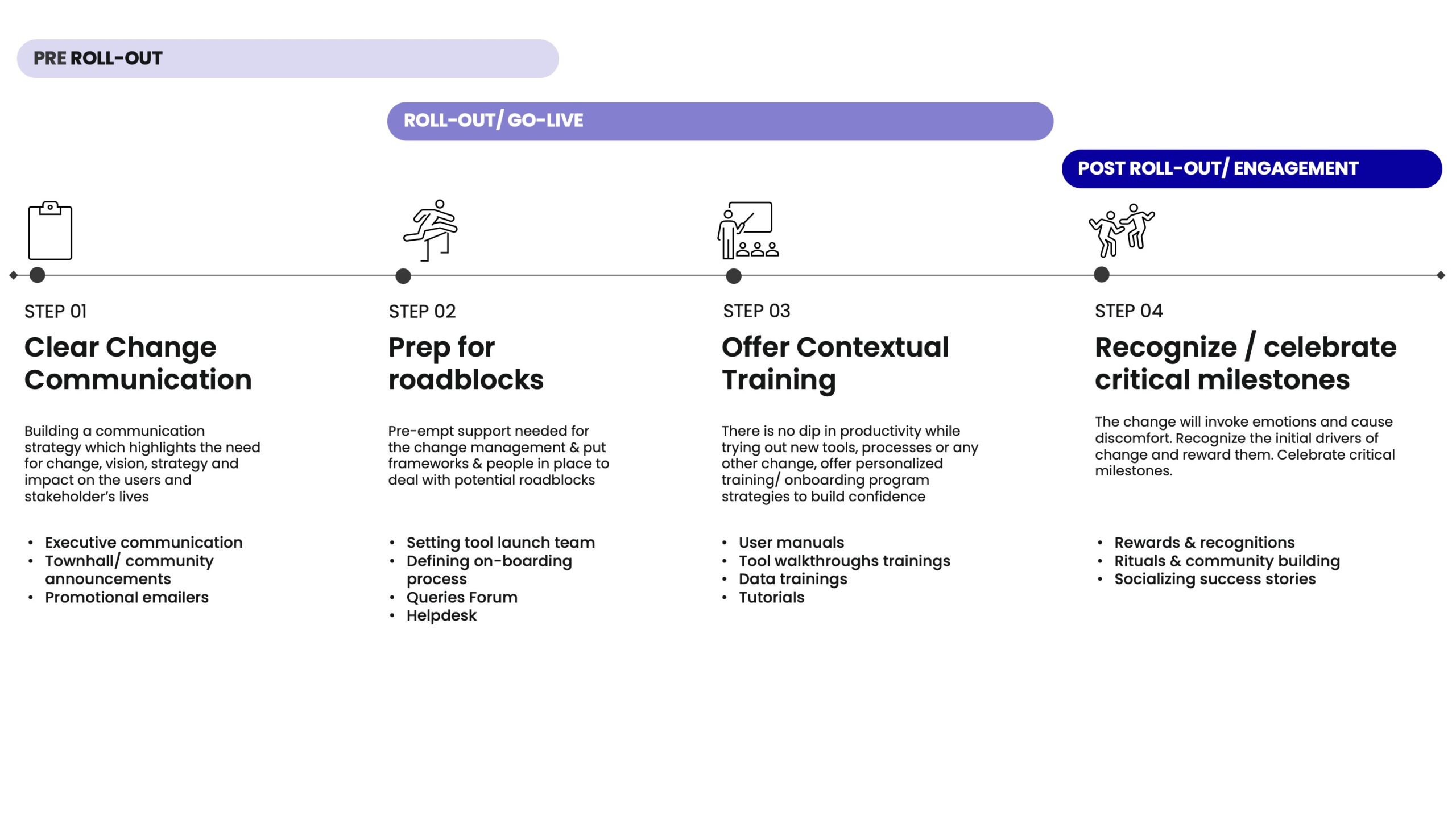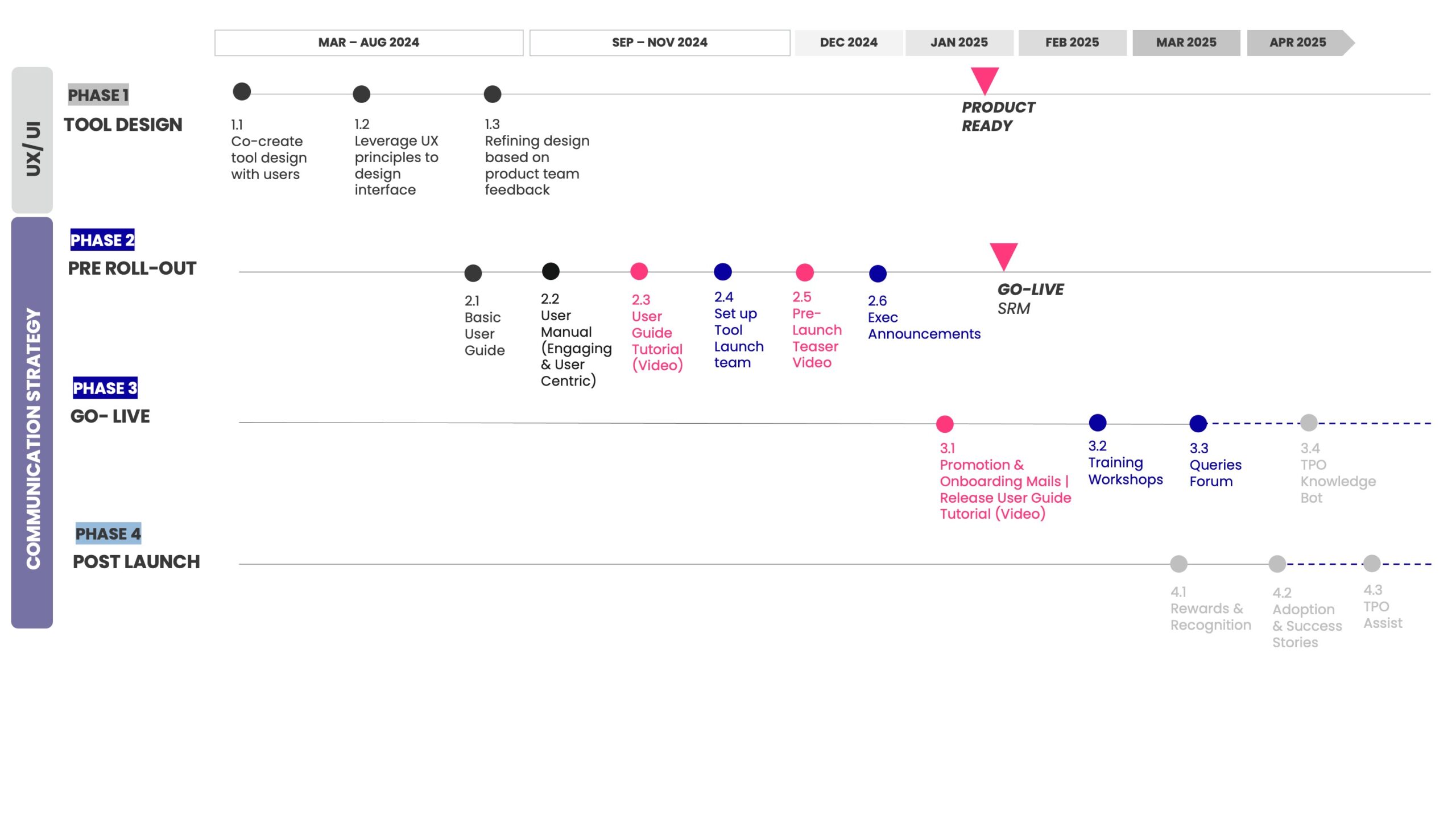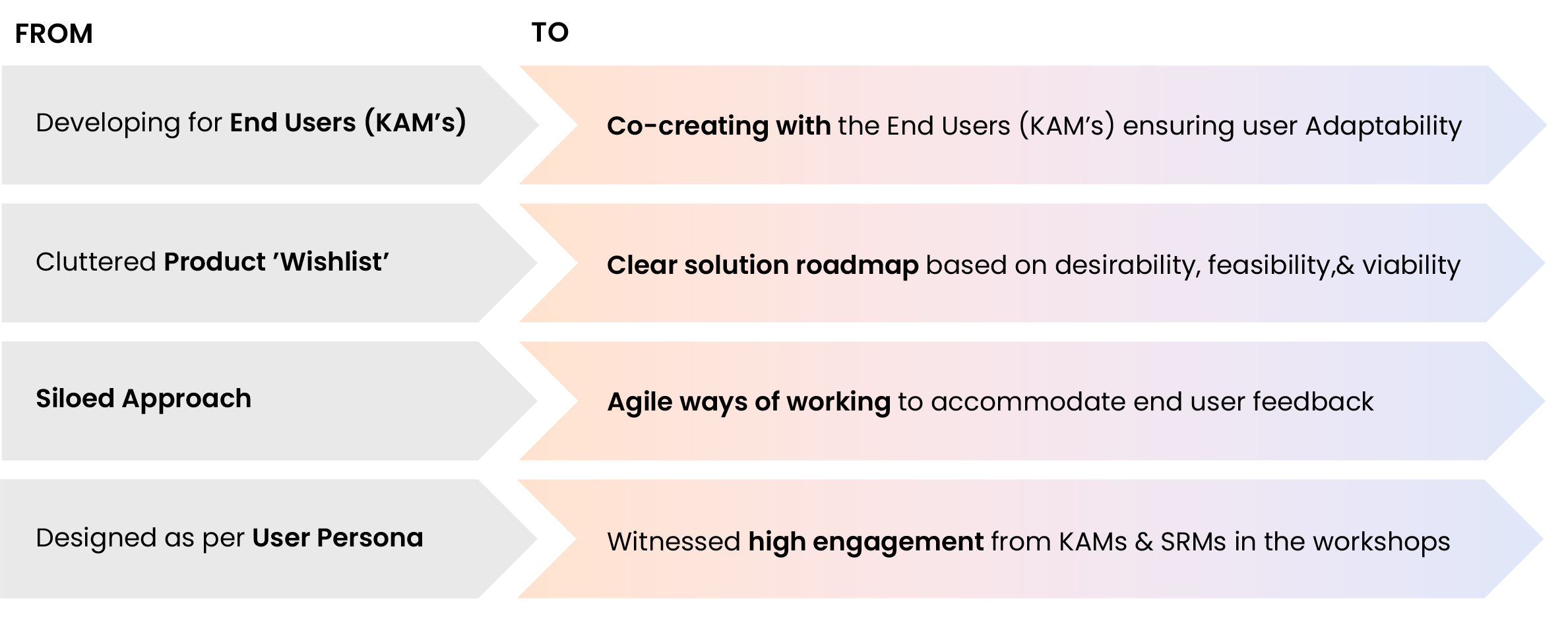Trade Promotion Optimization
Client Ask: A CPG giant wanted us to build a holistic trade promotion tool that is self-serve, scalable, integrated with their trade promo management and creates and seamless experience for business users. Their current needs were:
- Encompass complex AI process with attribution, incrementally & optimisation framework.
- Handles edge cases – seasonal products, EDLP, multi-banner
- Borrow learnings for forward planning & intelligence
- Connected ecosystem for smooth working of TPO-TPM
- Complex yet simple to use tool – for users to make plans, compare, deploy and track promotions.
Challenges & Pain Points: The Strategic Revenue Management (SRM) teams & Key Account Mangers (KAMs) work in silos to build a promotion plan. Through discovery, the opportunity areas for the solution that were identified were:
- Integrated analysis, planning and tracking tool to decrease unbalances dependency on the SRMs
- Implementation of automation
- Build transparency across the tool
- Streamlined interface, intuitive design & customisable dashboard for SRMs & KAMs
- Enable scenario planning
- Incorporate retailers perspective
- Robust feedback loop
Approach: A-E-D-D approach of integrating AI – Engineering – Design – Data Science.
Value Created:
- Clear solution roadmap based on desirability, viability & feasibility instead of a cluttered ‘product wishlist’
- Well defined features: Co-creation with the users helped us define persona specific product features for KAMs & SRMs
- Change Management: Step by step change management strategy to mitigate risk of low adoption of the tool
End User Feedback:
“This would be a nice tool for what I do for sure. I like that the editable piece because it would allow me to look out farther..”
“I’m basically putting in my offer and the prIce point, and funding for that, then it’s calculate that panned trade spend for me with the system? .. LOVE THAT!”
Stakeholder Feedback:
“Just wanted to say excellent job on all of these prototype feedback interviews in the last few days. They bought a ton of good insights & recommendations from the KAMs. And overall, it felt like they really did like where we were going with the tool. ”
Time: 18 months
Role: Design Lead
Team: Design & Behaviour Science, Data Engineering, Data Science, Development Team
Client Ask | Product Vision
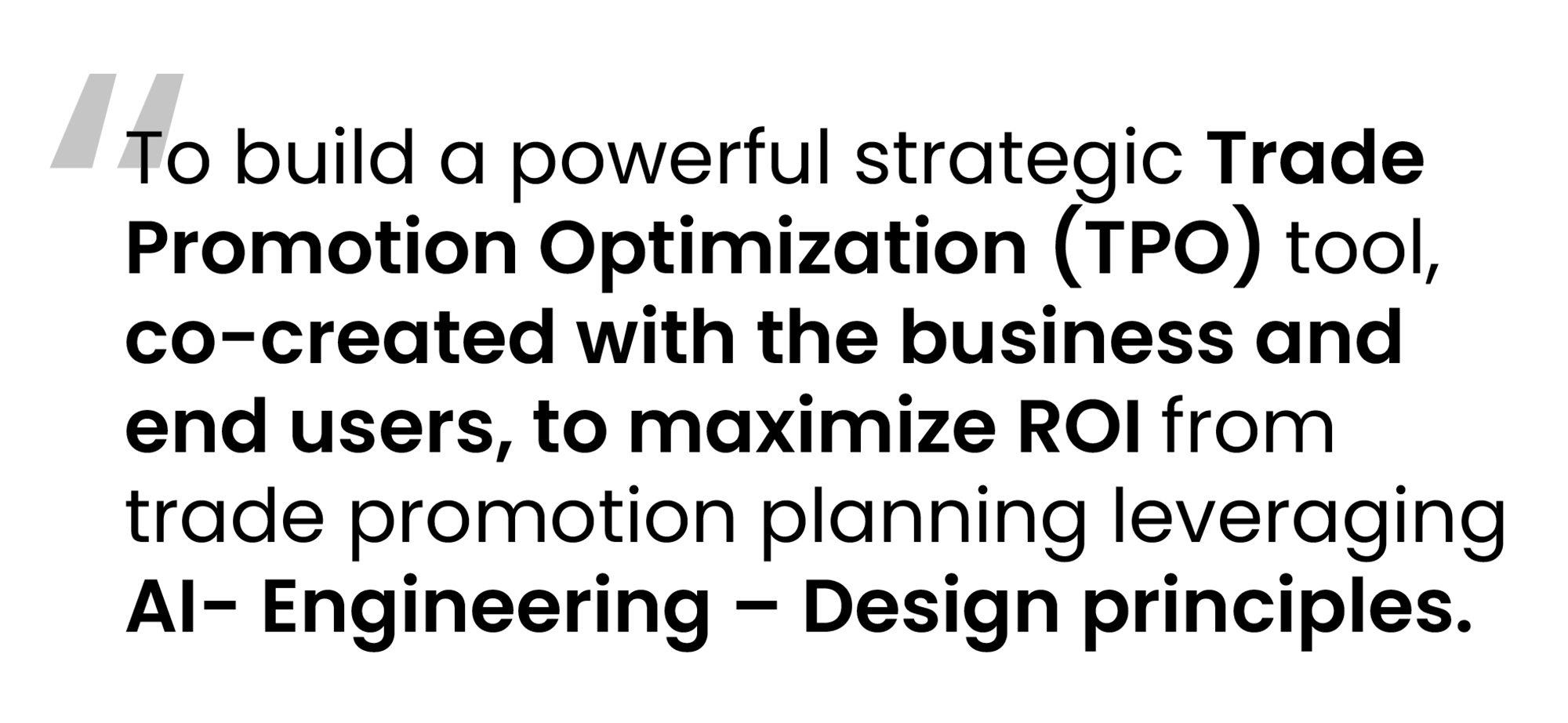
Understanding Benefits of Promotion
Who benefits more from a promotion? Manufacturer? Retailer? Customer?
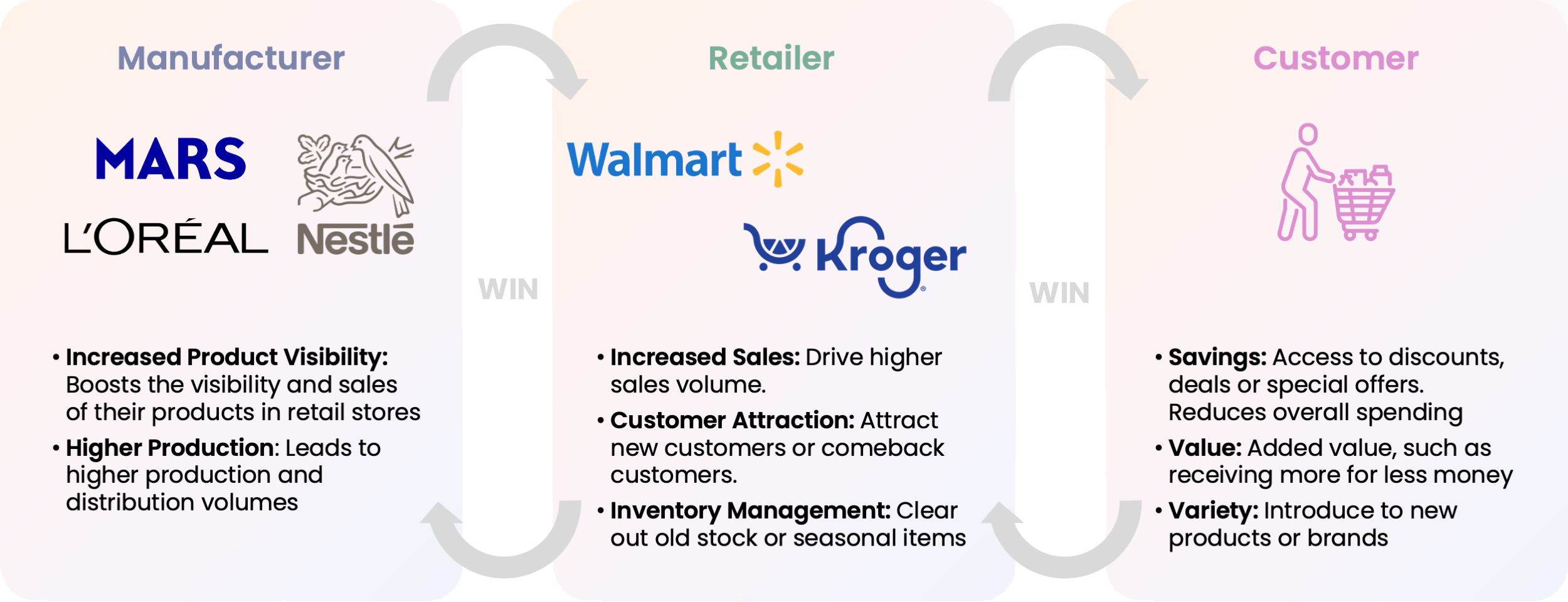
Discovery Phase
We dived into understanding user pain-points. We spoke to 23 end users to understand their current ways of working and pain points.







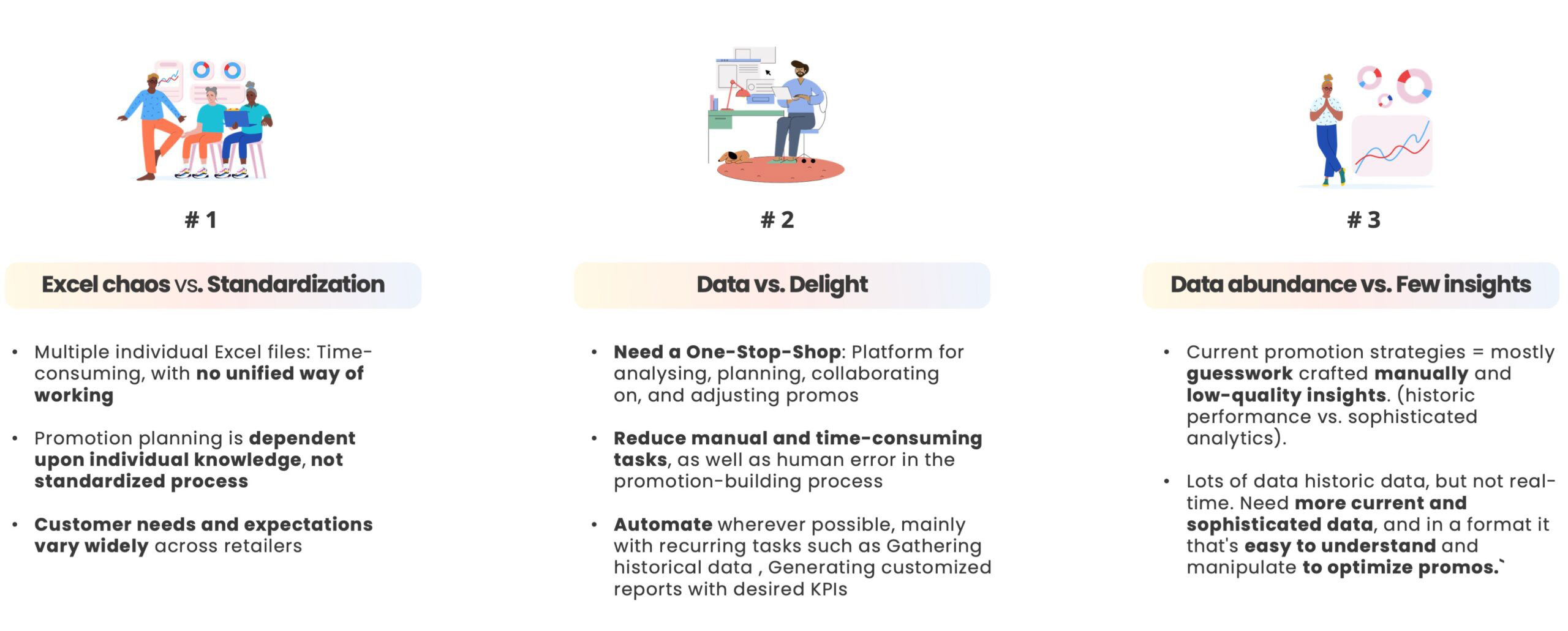
The key emerging needs across people, process, tools, data and culture.
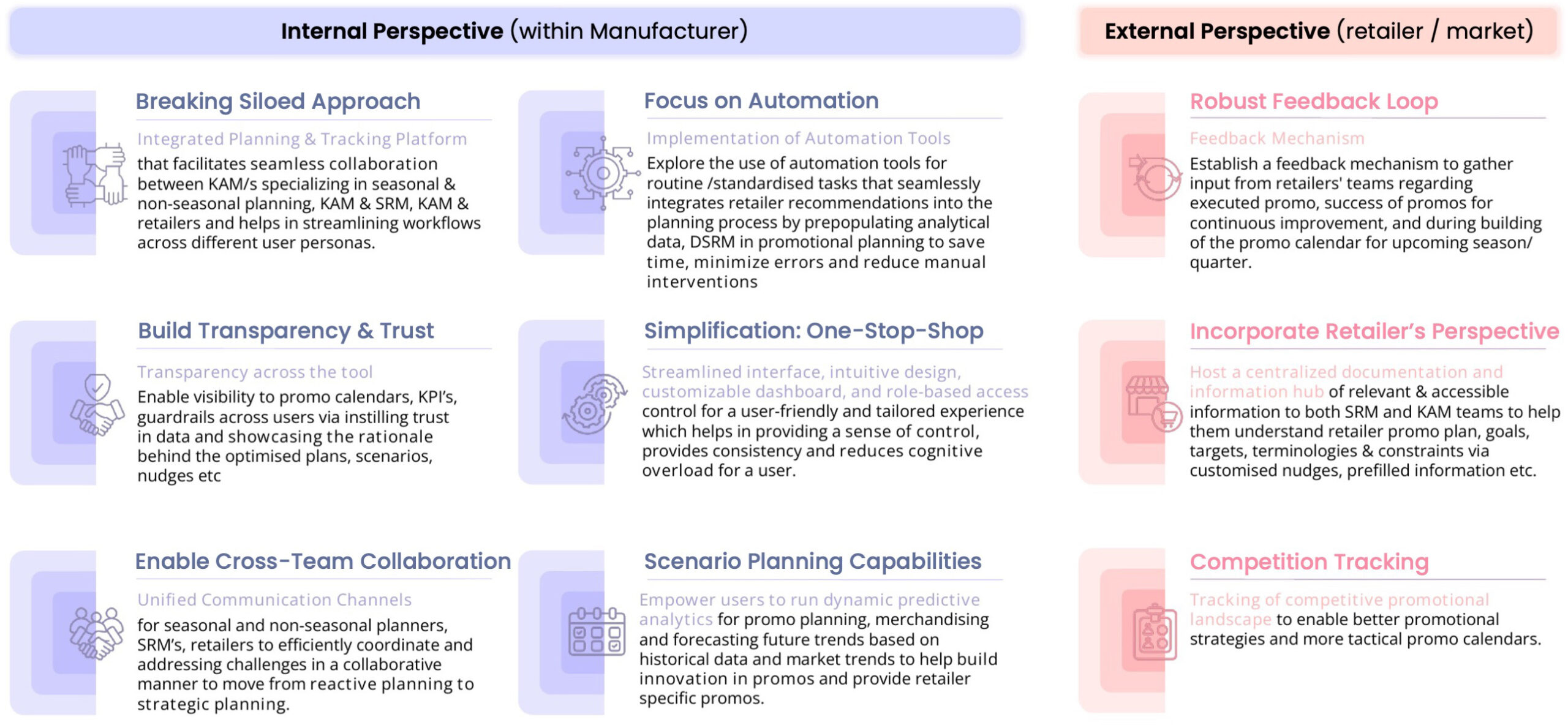
Synthesis of User Interviews
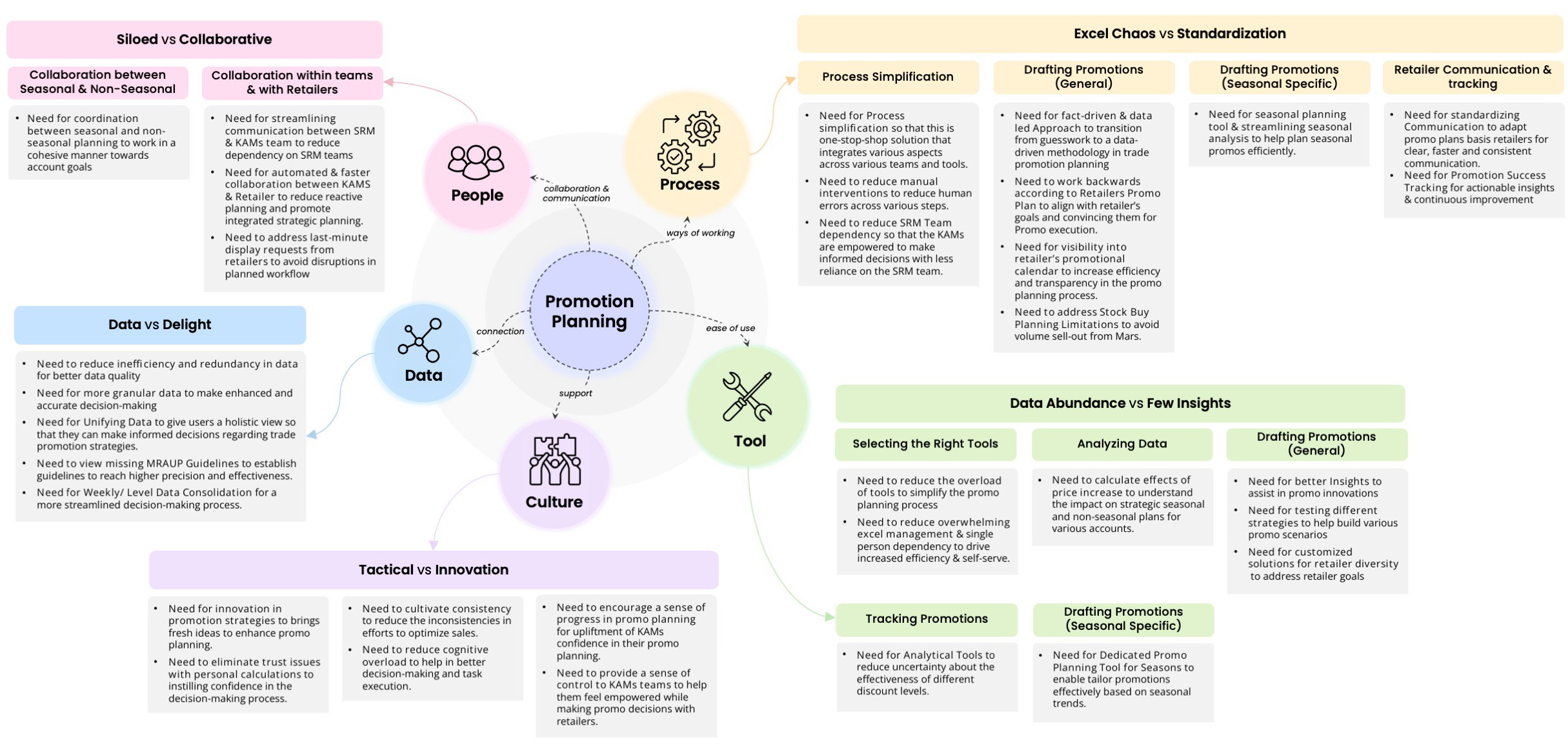
Ideation & Feedback Workshops with End User
We then conduced the Ideation Workshops with the KAMs and SRM users using prompts to co-create the solution with them. The objection of the workshop was for to help the end users envision building an intuitive & insightful promo planning application that makes their life easier & your work impactful.


The opportunity areas from an internal and external perspective were
The context set-up and prompts to help in ideation were:
01
Context: It is promotion planning time of the year! Anna, Marc & Mary are analysing data for their retailer.
Prompt: Anna, Marc & Mary decide to use digital AI assistant to help them with some answers while planning their promo, what kind of questions would they ask?
02
Context: Anna, Marc & Mary created a inital promo plan for their retailers. However, they are looking for more data driven & forward looking intelligence to make their plan best in class.
Prompt: How do you imagine this TPO application will enable them to create, experiment & implement their respective promo plans that are also aligned with their account goals?
03
Context: Anna, Marc & Mary have built their promo plans. They want to discuss it with their retailer.
Prompt: How can the TPO application help Anna & Marc incorporate the retailer’s suggestions and also address last-minute request, that lead to promo planning iteration?
04
Context: Anna, Marc & Mary have started building best in class promo plans for their respective retailers.
Prompt: If the TPO application was to give Anna, Marc & Mary an AI recommended promotion plan, how would they ensure that it is the best plan or incorporates the business nuance/personal experience with the retailer?
05
Context: Anna and Marc are evaluating the promo calendar.
Prompt: How can TPO application help Anna, Marc & Mary collaborate amongst internal stakeholders (like finance team, SC team, leadership, demand planning) for reviews, discussions, approval & validation?
06
Context: Anna, Marc & Mary are currently analysing data as preparation before building their best in class promo plans for their respective retailers for the coming year 2025?
Prompt: What information can the TPO application provide about competition brands, competing retailers, shopper and their decisions that will influence their promotion plans & decisions?
07
Context: Anna, Marc & Mary have built their promo plans and submitted in the system. After 2 months they want to make some changes in the promo calendar.
Prompts: How can the TPO application help Anna and Marc to evaluate the performance of the ongoing promo and thus update the promo if necessary?
08
Context: Anna & Marc have started building best in class promo plans for their respective retailers and are looking for guidance. However Mary is on leave.
Prompts: How would Anna & Marc use the TPO application to help them create an efficient promo calendar in the absence of Mary?
09
Context: Anna, Marc & Mary have built their promo plans. They want to discuss it with their retailer.
Prompts: How can the TPO application provide inputs to Anna & Marc to do more pro-active planning for future negotiations with their retailer?
We synthesised the ideation workshop to build the information architecture and key low fidelity screens. We conducted feedback workshops to validate and gather early end user feedback (KAM & SRM).
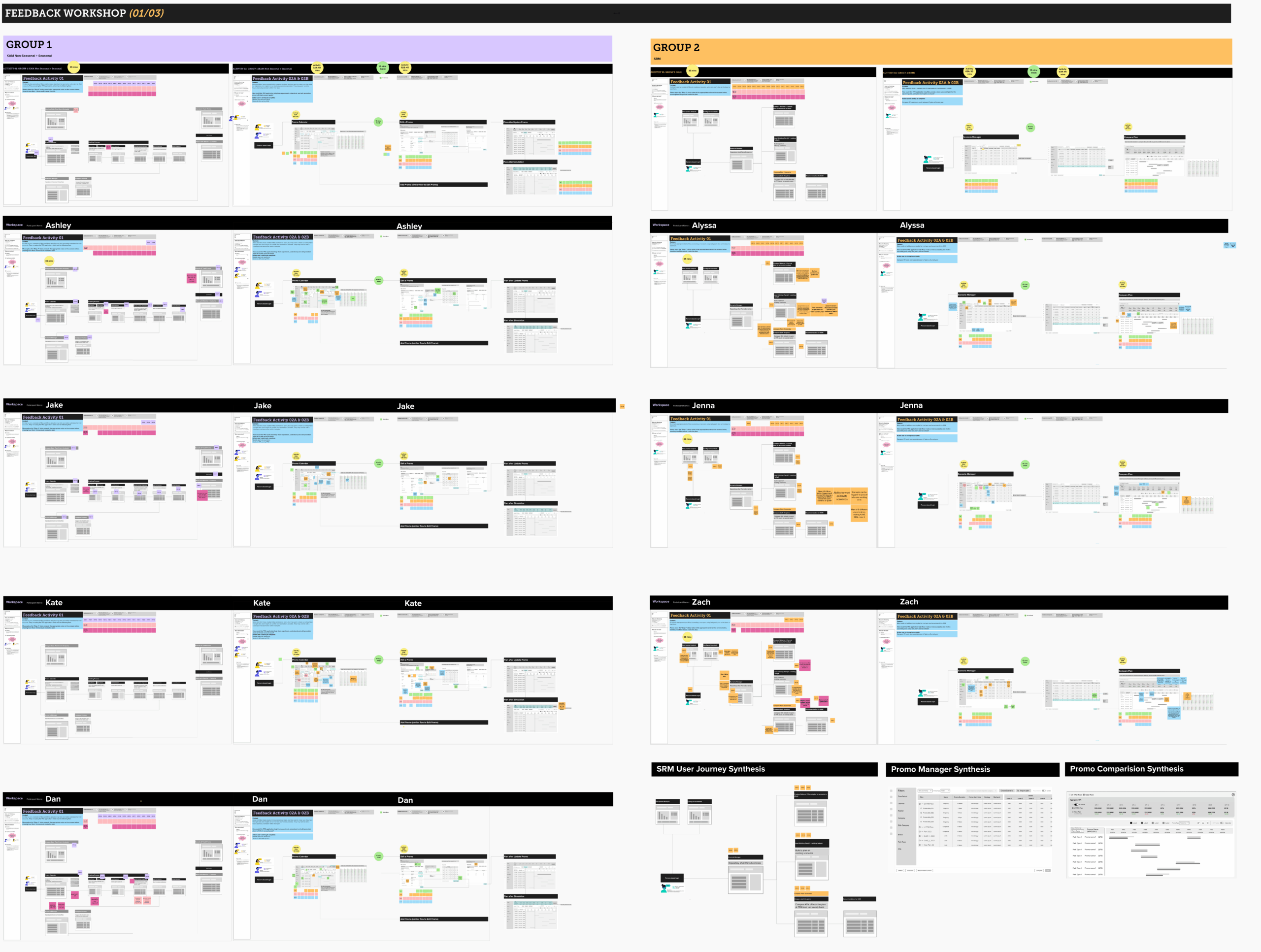
We also conducted a survey to gather feedback on the workshops from the key stakeholders and all the end users.
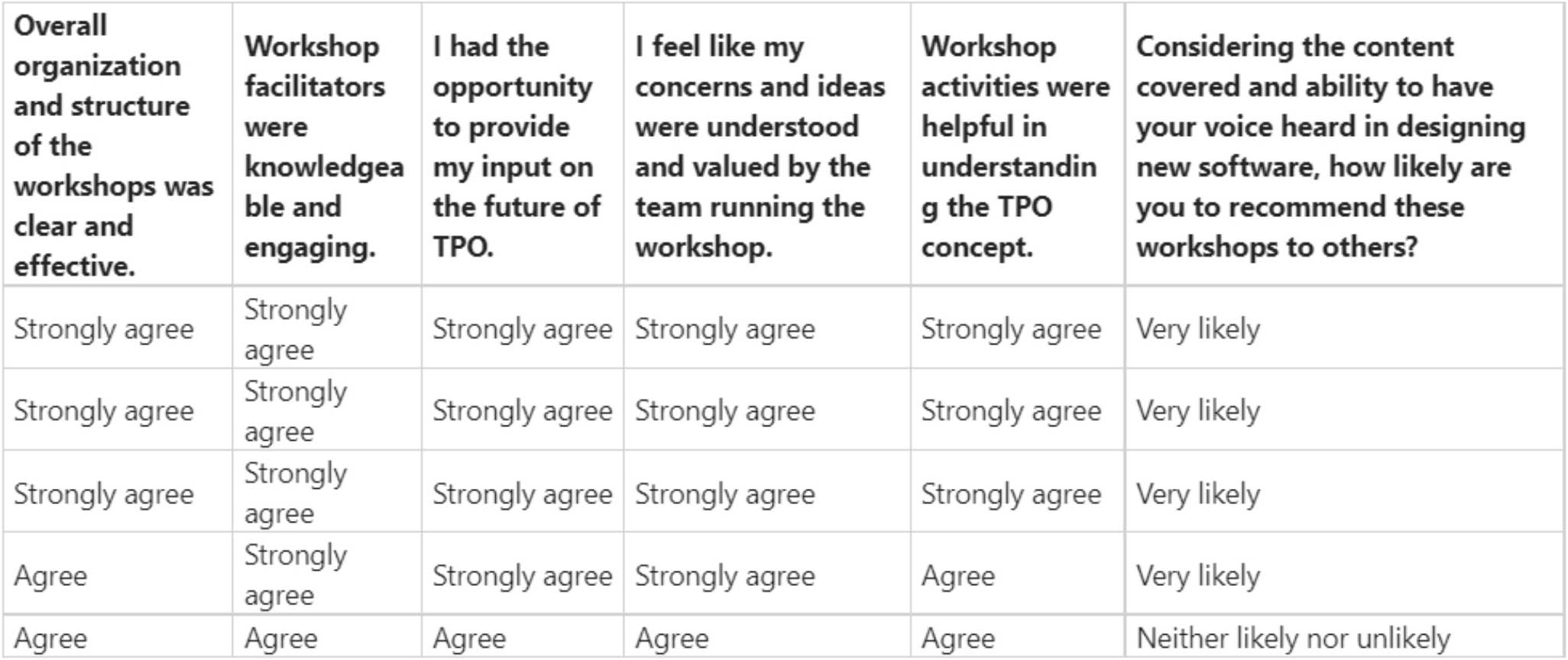
Design & Development Phase
We synthesised the feedback workshop and started building the user journery.
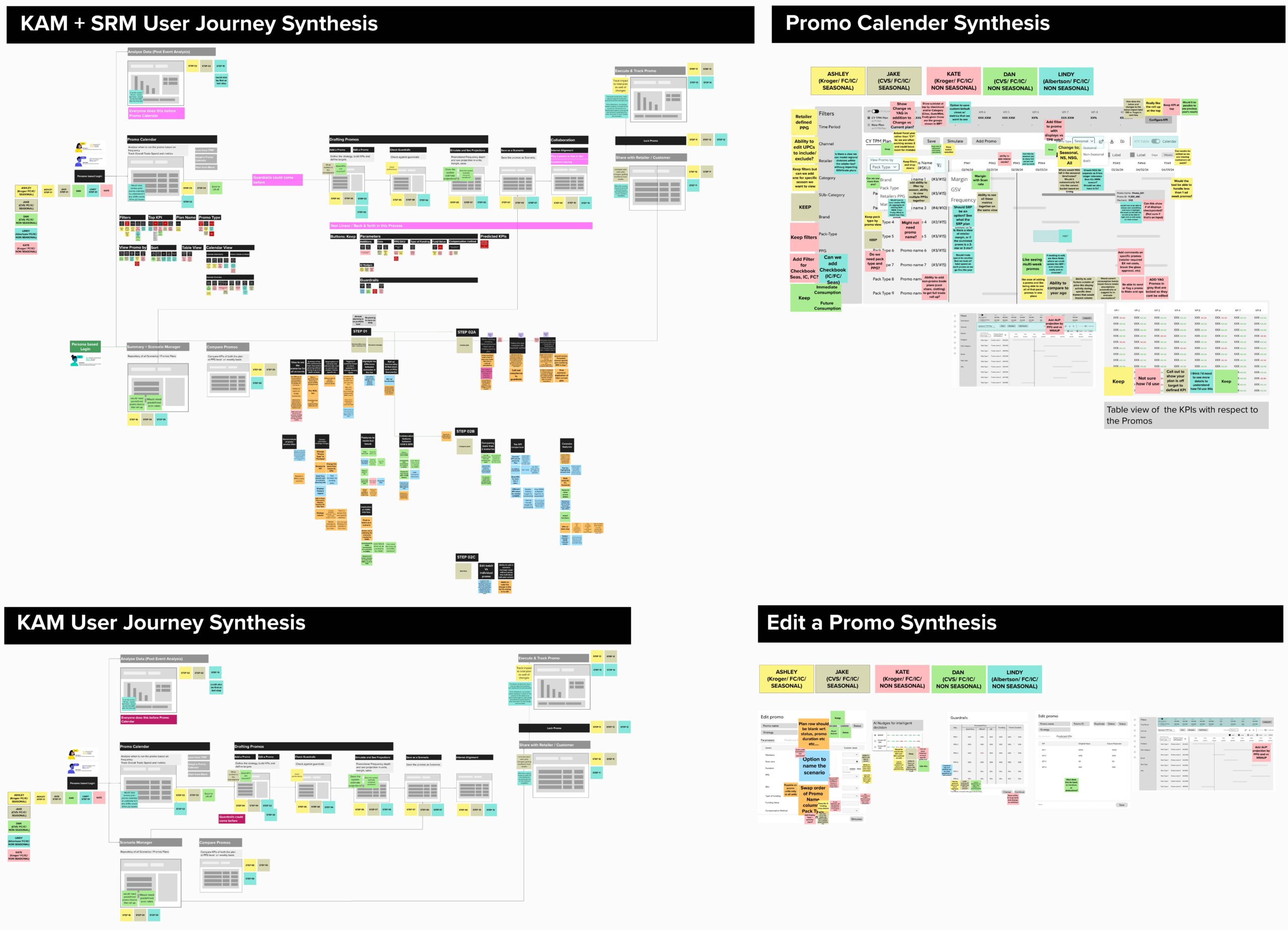
We started with empathy by visualising the current user journey

And what could be an ideal user journey
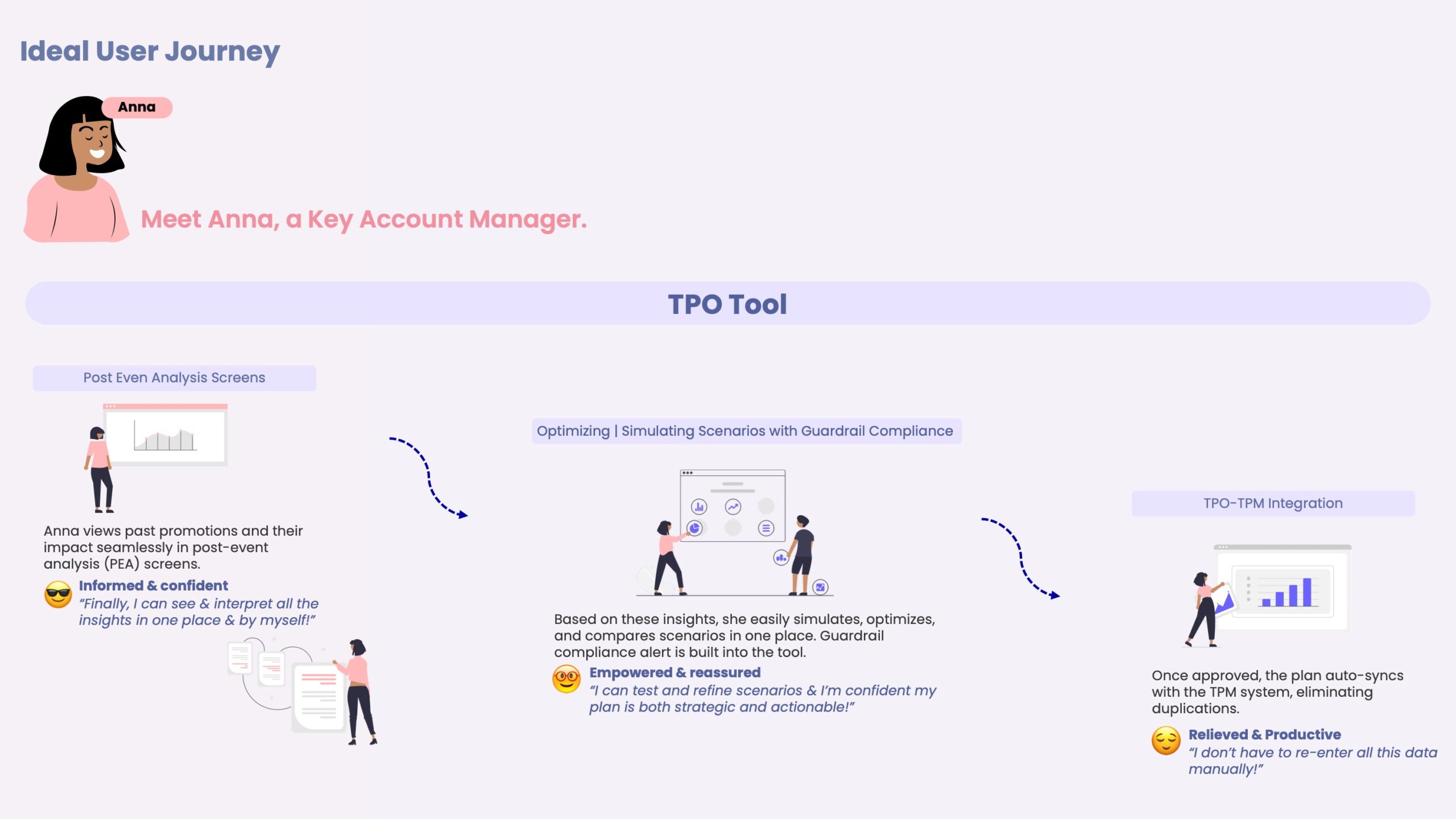
We framed the How Might We’s
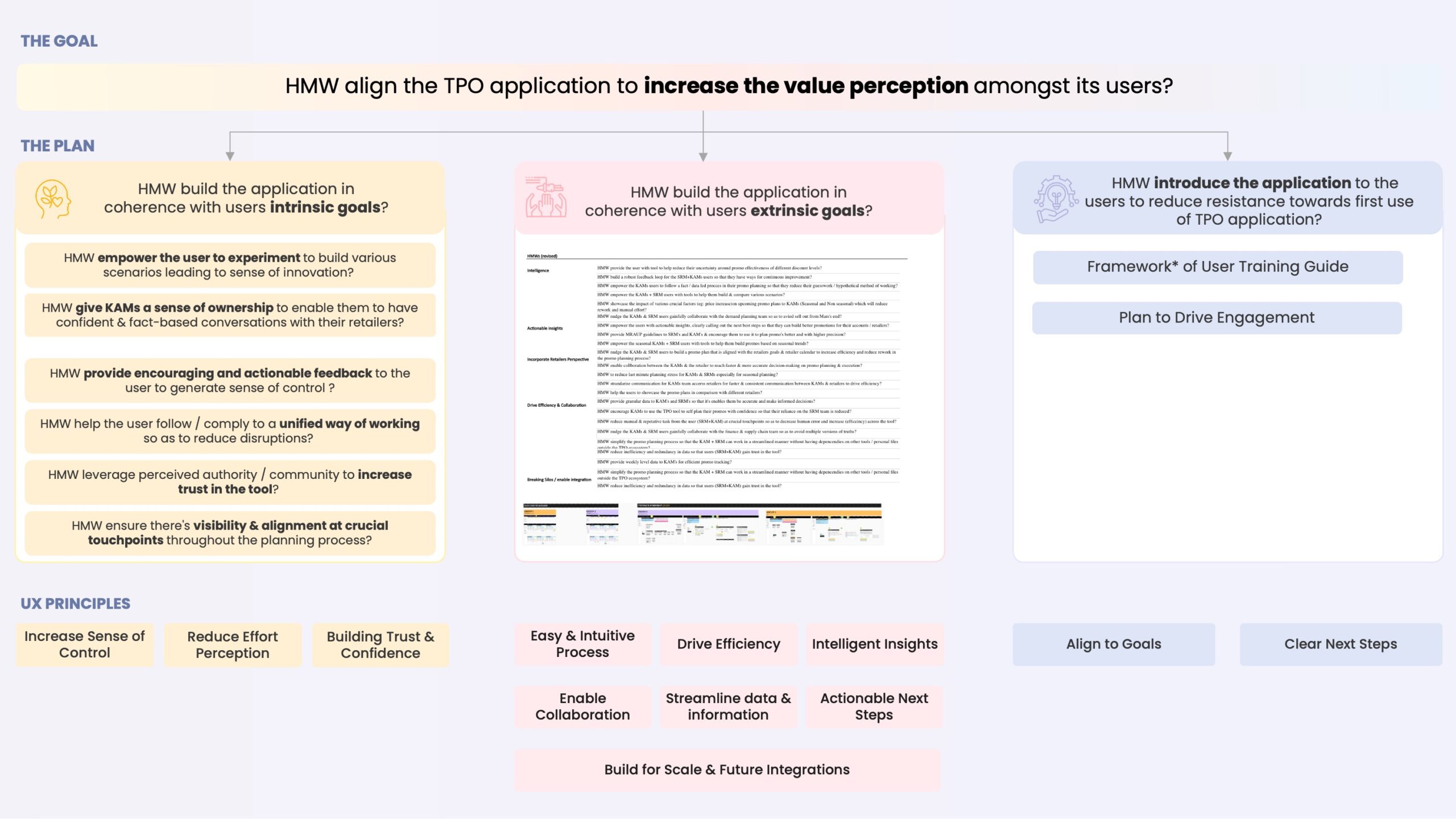
Envisioned the TPO Solution Architecture
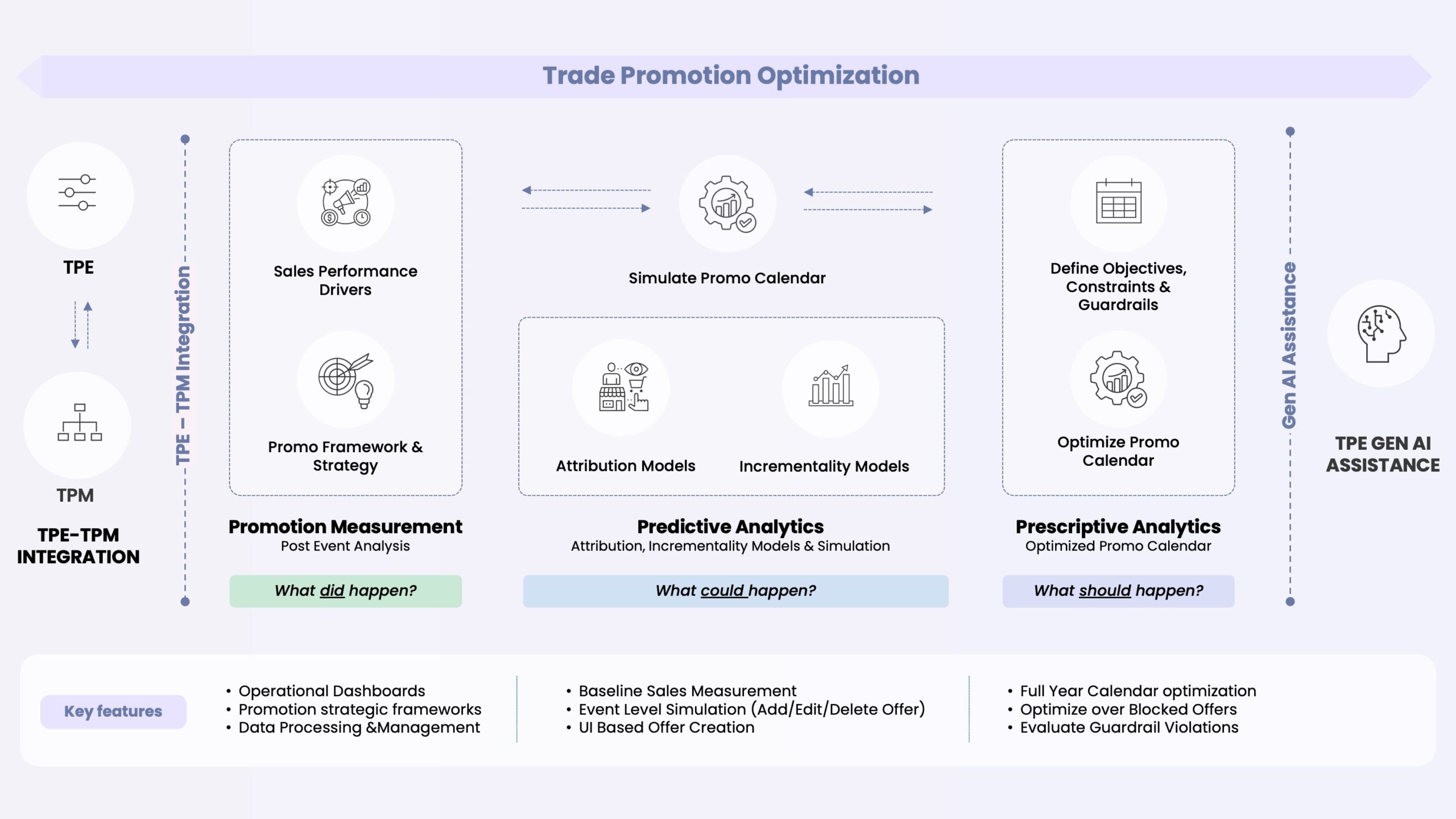
Once the ideal user journey across the tool for the SRM & KAM persona was defined, we built the Information Architecture
Build an Interactive Experience: Wire-framing to Clickable Prototype
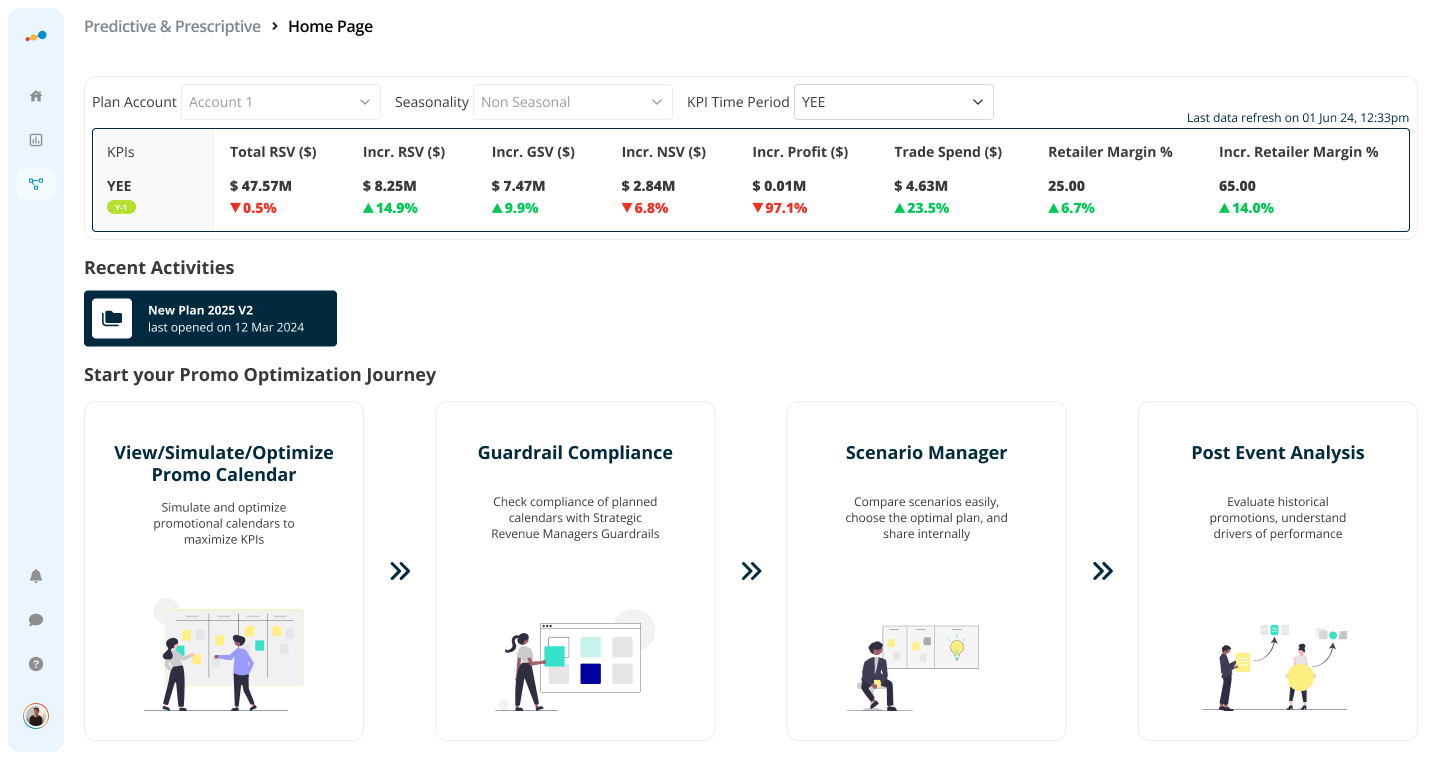
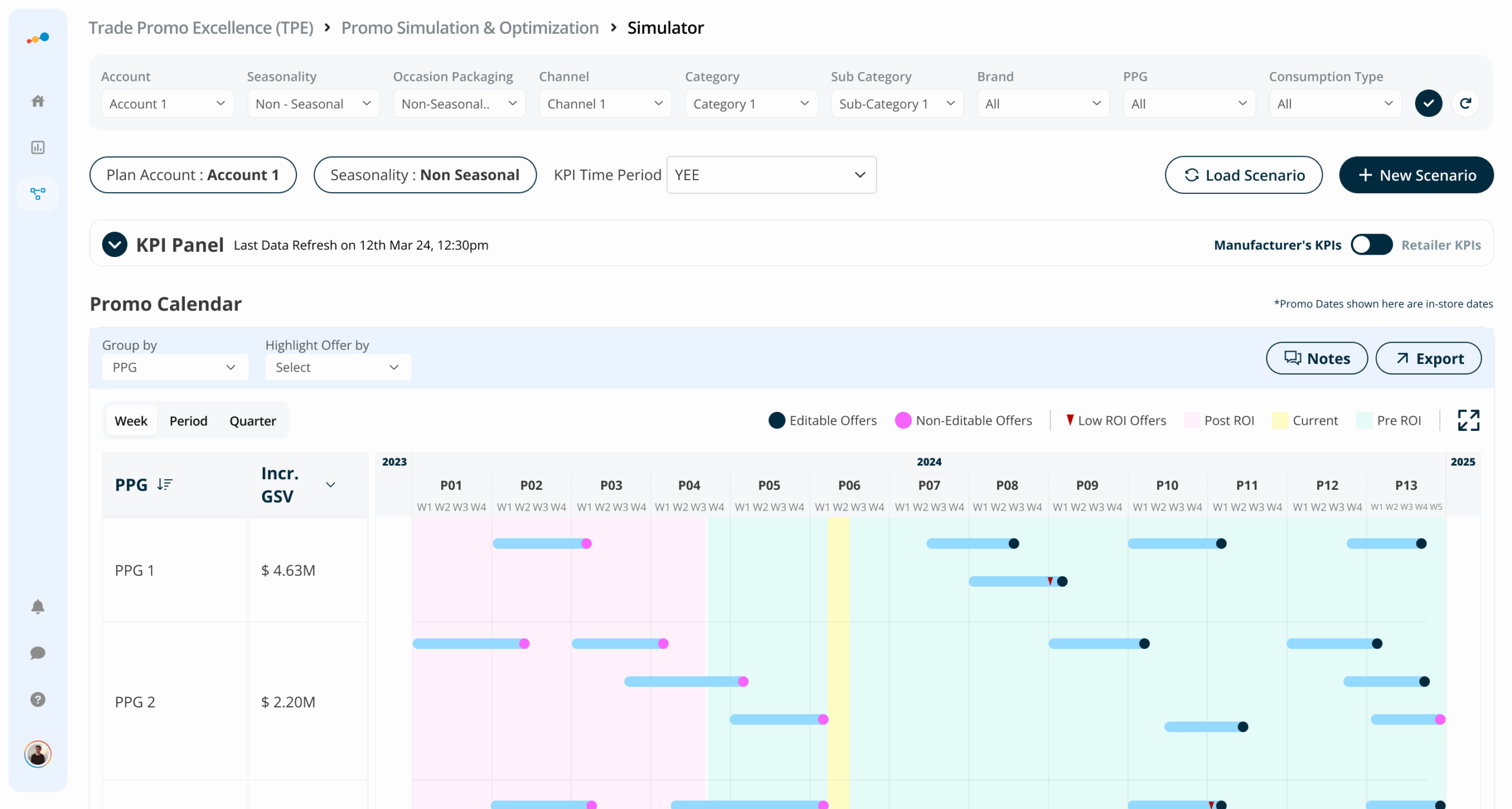
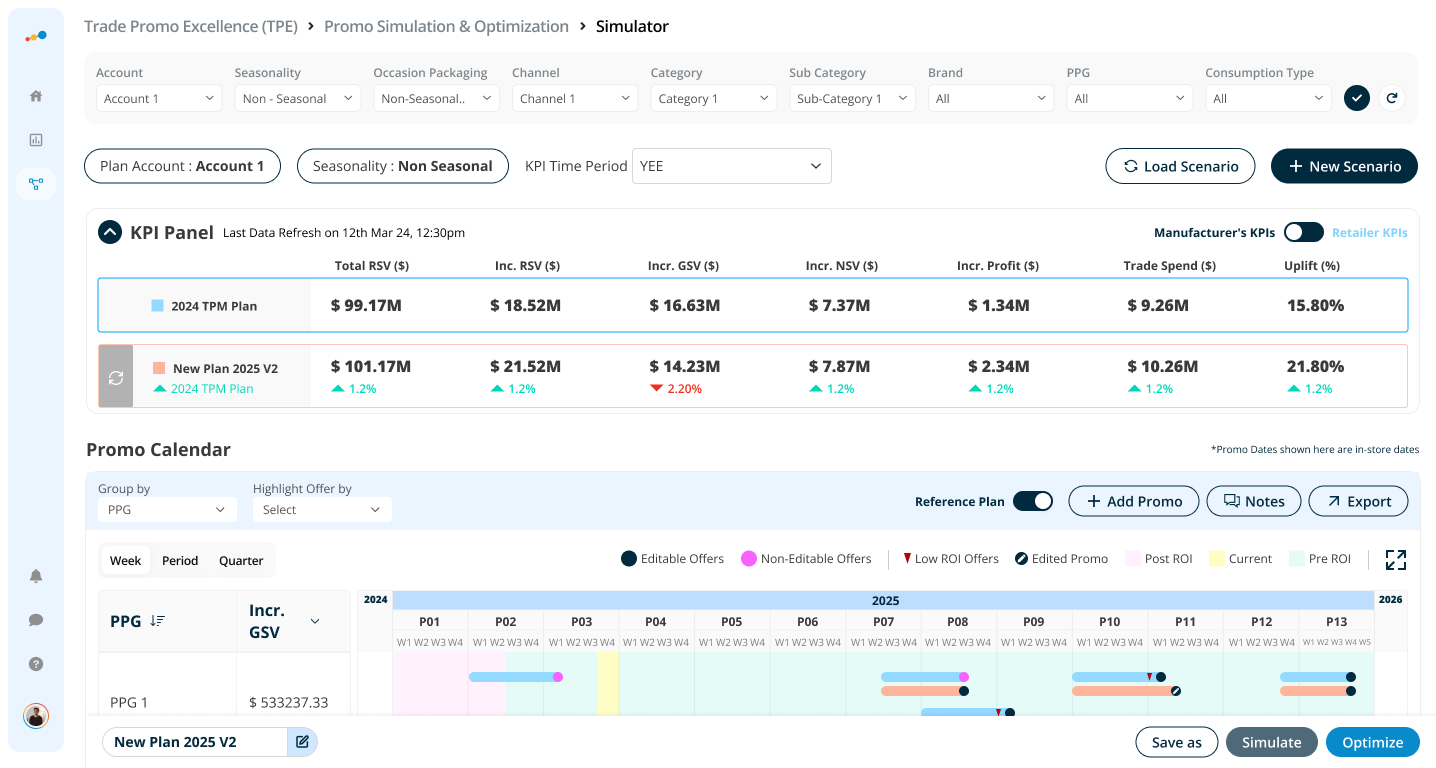
Gathering End User Feedback: We started building prototypes with key interactions to gauge the user experience & usability of the tool
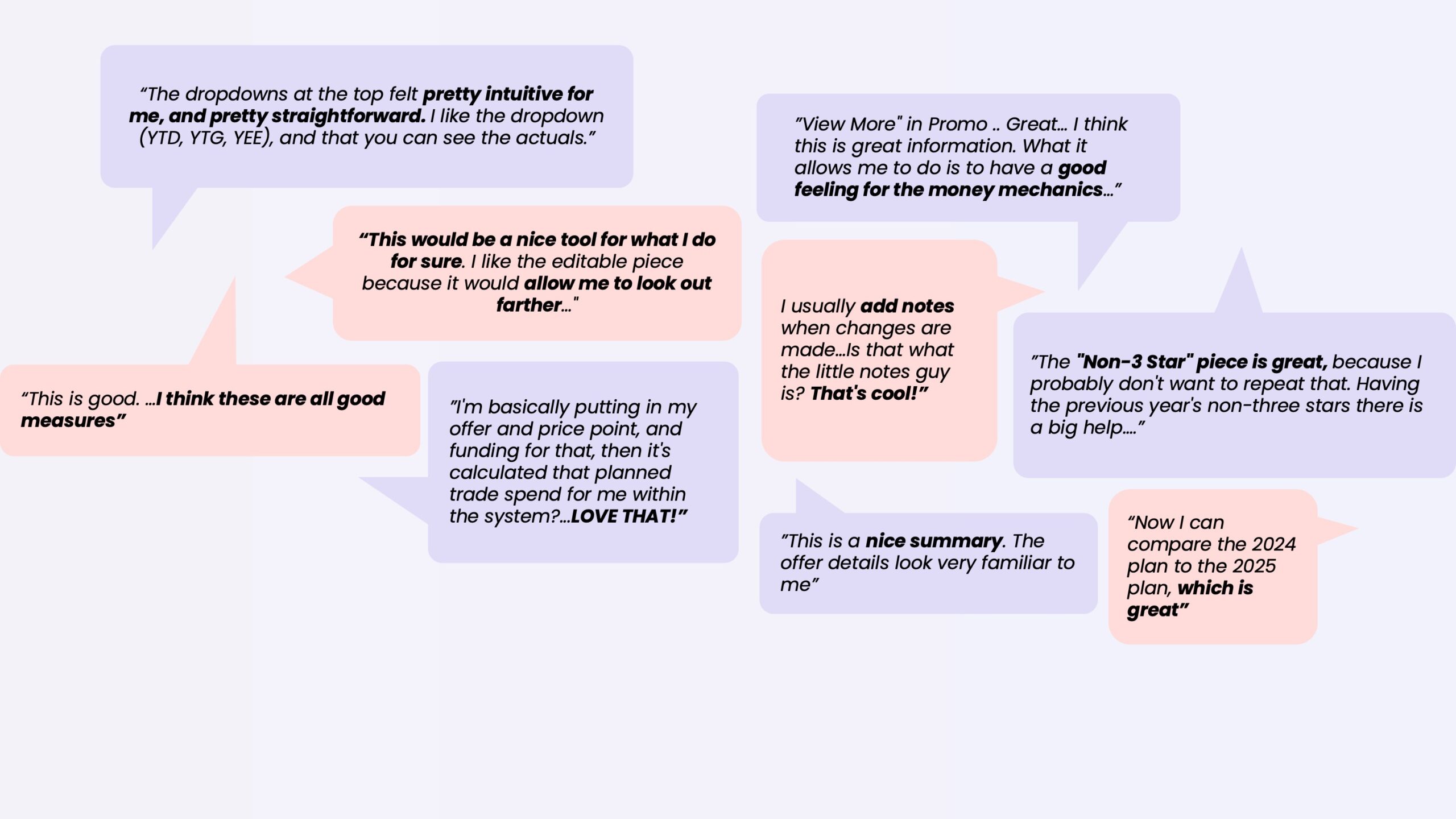
We also received positive Stakeholder Feedback
“Just wanted to quickly say the excellent work the on the prototype interviews in the last few days. They brought a ton of good insights and recommendations. And overall, it felt like they really did like where we were going with the tool.”


